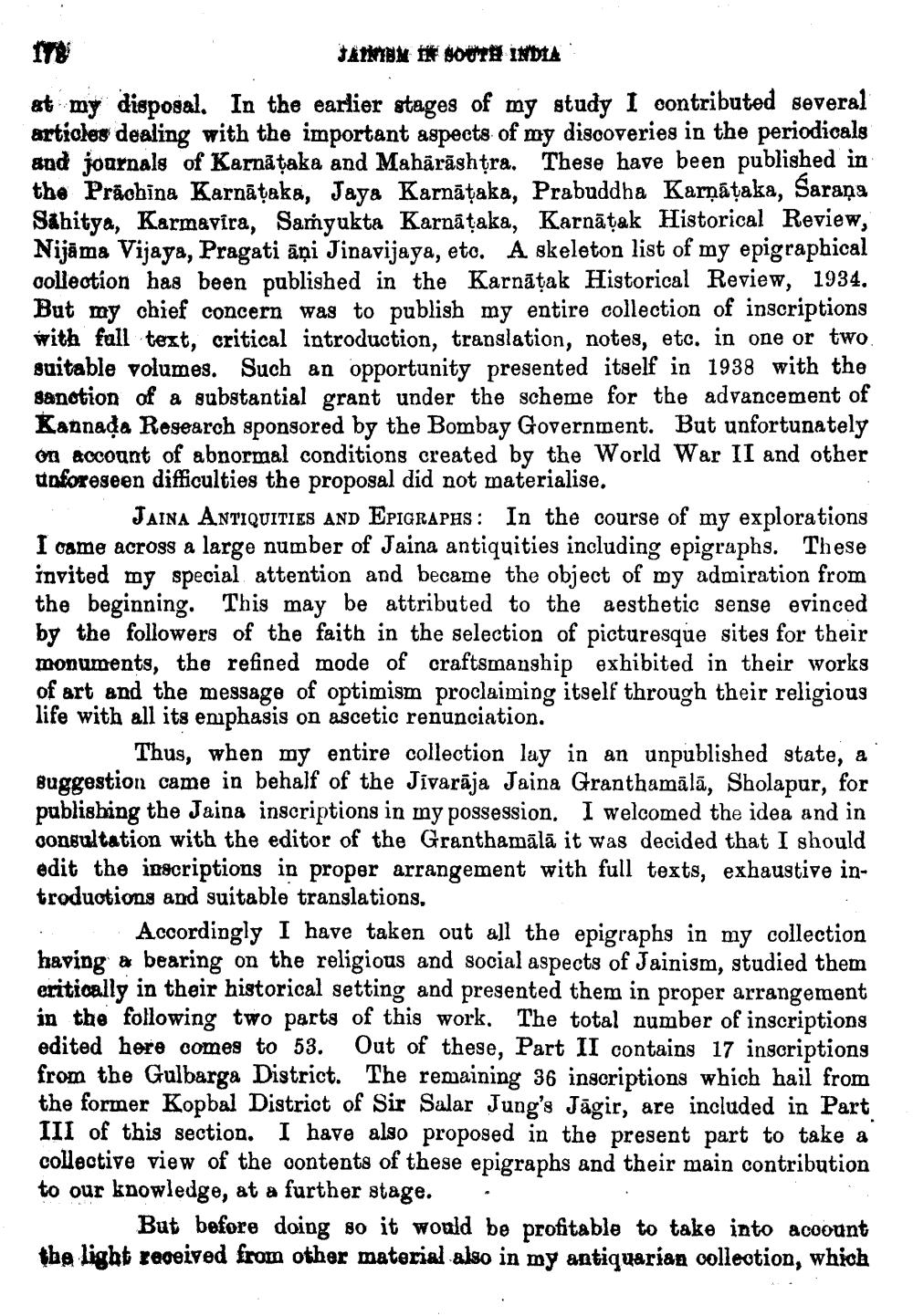________________
178
JAINISM IN SOUTH INDIA
at my disposal. In the earlier stages of my study I contributed several articles dealing with the important aspects of my discoveries in the periodicals and journals of Karnataka and Maharashtra. These have been published in the Prachina Karnāṭaka, Jaya Karnāṭaka, Prabuddha Karṇāṭaka, Śaraṇa Sahitya, Karmavira, Samyukta Karnataka, Karnatak Historical Review, Nijama Vijaya, Pragati ani Jinavijaya, etc. A skeleton list of my epigraphical collection has been published in the Karnatak Historical Review, 1934. But my chief concern was to publish my entire collection of inscriptions with full text, critical introduction, translation, notes, etc. in one or two. suitable volumes. Such an opportunity presented itself in 1938 with the sanction of a substantial grant under the scheme for the advancement of Kannada Research sponsored by the Bombay Government. But unfortunately on account of abnormal conditions created by the World War II and other unforeseen difficulties the proposal did not materialise.
JAINA ANTIQUITIES AND EPIGRAPHS: In the course of my explorations I came across a large number of Jaina antiquities including epigraphs. These invited my special attention and became the object of my admiration from the beginning. This may be attributed to the aesthetic sense evinced by the followers of the faith in the selection of picturesque sites for their monuments, the refined mode of craftsmanship exhibited in their works of art and the message of optimism proclaiming itself through their religious life with all its emphasis on ascetic renunciation.
Thus, when my entire collection lay in an unpublished state, a suggestion came in behalf of the Jīvarāja Jaina Granthamala, Sholapur, for publishing the Jaina inscriptions in my possession. I welcomed the idea and in consultation with the editor of the Granthamālā it was decided that I should edit the inscriptions in proper arrangement with full texts, exhaustive introductions and suitable translations.
Accordingly I have taken out all the epigraphs in my collection having a bearing on the religious and social aspects of Jainism, studied them eritically in their historical setting and presented them in proper arrangement in the following two parts of this work. The total number of inscriptions edited here comes to 53. Out of these, Part II contains 17 inscriptions from the Gulbarga District. The remaining 36 inscriptions which hail from the former Kopbal District of Sir Salar Jung's Jagir, are included in Part III of this section. I have also proposed in the present part to take a collective view of the contents of these epigraphs and their main contribution to our knowledge, at a further stage.
But before doing so it would be profitable to take into account the light received from other material also in my antiquarian collection, which




